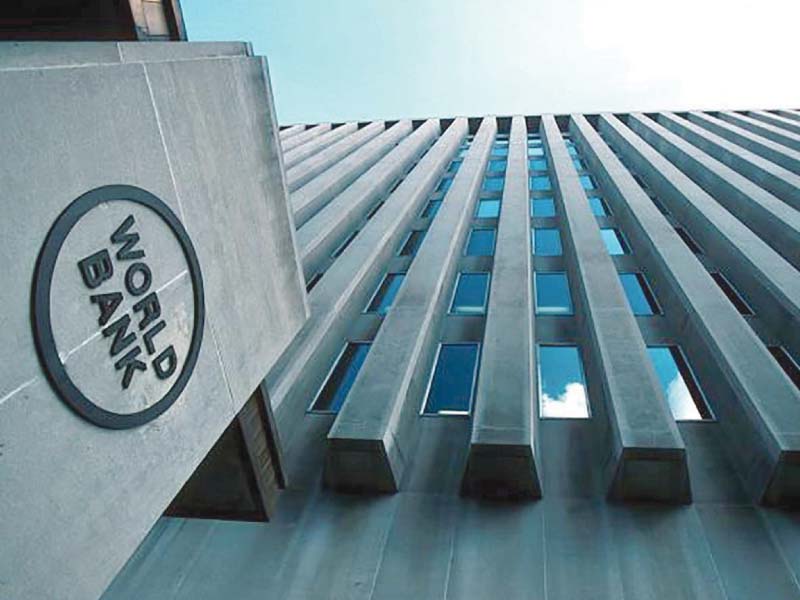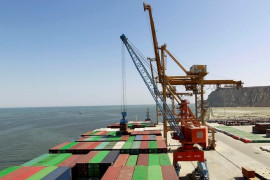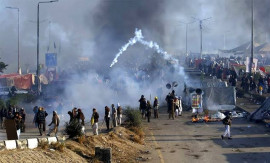
ISLAMABAD: In order to improve local conditions in areas from where the China-Pakistan Economic Corridor (CPEC) will pass, the relevant stakeholders will have to undertake complementary measures, according to a joint study carried out by four international donors.
With investments in roads, railways and ports, the $60-billion CPEC offers enormous potential for Pakistan to boost its economy, reduce poverty, spread benefits widely and help those likely to be affected by the new trade route, a new report “The Web of Transport Corridors in South Asia”, states.
The study has been carried out by the Asian Development Bank (ADB), United Kingdom’s Department for International Development, Japan International Cooperation Agency (Jica) and World Bank.
The World Bank on Thursday released a press release that briefly discussed few aspects of the study, but did not publish the full report.
“Appraisal simulations for CPEC and the Kolkata-Dhaka corridor suggest that complementary measures are needed to improve local conditions that, in turn, will create formal jobs and generate tax revenues that could pay for corridor investments,” said the statement.
In light of the international evidence and specific analyses for South Asia, the report advocates a more comprehensive design of corridor programmes that actively manages trade-offs and closes potential financing gaps in a sustainable manner.
“The ability of large-scale transport investments to generate wider economic benefits depends on the population density in the areas they cross,” it said. Their capacity to spur structural transformation along the way depends on complementary factors around the transport corridors, such as skills of the local population or restrictions on local land use, it added.
The new transport infrastructure must come with the means for people to take advantage of the improved connectivity right from the start.
“Transport corridors are very important in today’s economy as they bring regions together, connect markets and create demand, which is critical for new growth,” said Ahsan Iqbal, Minister for Planning and Development.
“It is very important, especially since Asia is becoming an important driver of global growth, that we connect the engines of growth in Asia with transport corridors to create opportunities for collaboration and create opportunities for those people who are now ready to come out of poverty,” said the minister.
The largest economic gains from investing in transport corridors may arise from urbanisation and job creation around this new infrastructure, rather than from more vehicles using them, said one of the report’s authors, World Bank economist Martin Melecky. Melecky added that not all corridor investments are equally successful in creating large economic surpluses that spread fairly throughout society.
The report noted that many transport corridors proposed across Asia would cost trillions of dollars to implement, far exceeding the financing resources available. Hence, countries need to prioritise the most promising corridors that will deliver the expected transformative impacts for their economies and people.
Engineering designs and geopolitical considerations could be important, but sound economic analysis is the key to designing truly successful corridors, the report argued.
Various studies have in the past also highlighted the positive impact of the CPEC investment bonanza. However, the materialisation of these benefits largely depends on the success of prioritised special economic zones to be set up under the second phase of CPEC.
“The upcoming Khyber Pass Economic Corridor is a positive example, where trade facilitation and development of local economic activities are explicitly integrated into the design of the project,” said World Bank Country Director for Pakistan Illango Patchamuthu.
The report reviews international experience with economic corridors, from the Pacific Ocean Belt in Japan in the 1960s to high-speed train networks in Europe more recently.
It also analyses the impact of the Golden Quadrilateral highway system in India and finds positive effects, including higher economic activity and better (non-farm) jobs for women.
However, air pollution rose in parallel and gains in household consumption were not equally shared across connected districts, the World Bank highlighted.
Published in The Express Tribune, March 23rd, 2018.
Like Business on Facebook, follow @TribuneBiz on Twitter to stay informed and join in the conversation.








































COMMENTS
Comments are moderated and generally will be posted if they are on-topic and not abusive.
For more information, please see our Comments FAQ